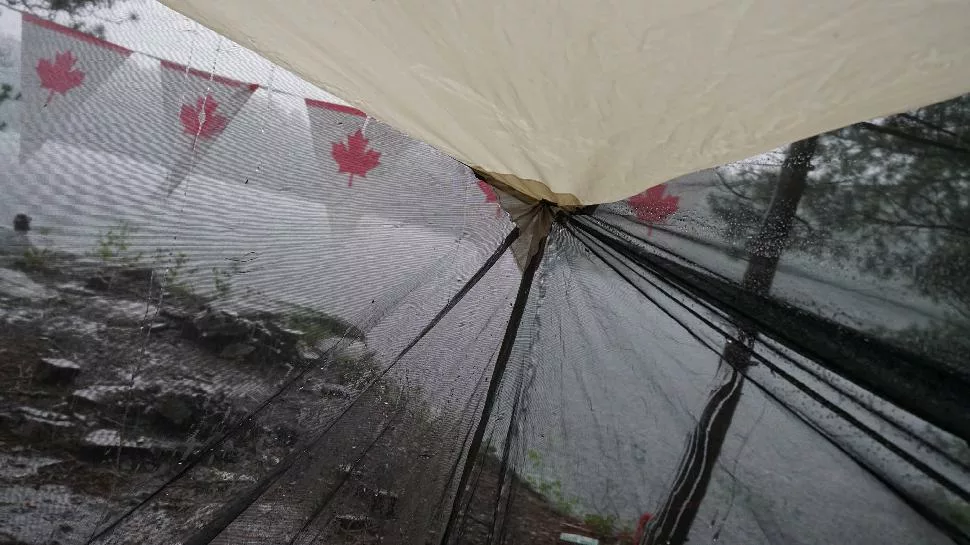The Happy Camper: Dealing with Sudden Squalls

On July 4, 1999 a massive storm swept through Ontario’s Quetico Provincial Park and neighbouring Boundary Waters to the south, downing 12 million trees and endangering hundreds of canoeists.
Shockingly, there were no deaths. But many were injured, and search and rescue teams worked for days to extract people from the interior.
Countless stories have been told by the survivors, all of which indicated it was one of the worst sudden storms they’ve ever witnessed. One of the best descriptions, however, was recorded in the Quetico Foundation’s quarterly newsletter by former Park Ranger, Art Madsen, who was paddling with his daughter on Saganaga Lake when the squall hit.
“I could see it was coming fast and black clouds had a brown yellowish colour under them. Lightning and thunder were flashing all around and wind was really getting up. After a few miles, I was following along a rock wall as I know lightning will hit the highest part. Quick as a flash I did not see the lightning, but one of the loudest thunder cracks I’d ever heard nearly knocked my ears off. Then I could see this greyish wall of cloud coming fast and knew it would really put down heavy rain. When I crossed by Powells’ place, the wind was so strong it was pushing rain horizontally. I was coming into the dock area very fast. My granddaughter rushed out and snubbed my bow rope to the dock. Within minutes the waves became five feet. This was the worst storm in memory.”
(Art was 94 at the time)
Staying off the water during sudden squalls like this is obviously a smart choice. It’s important to note, however, that it was the broken trees and flying debris that caused most of the injuries in the 1999 storm (forecasters titled it a “straight line wind storm”). So, your best bet is to weather such a severe storm in the open, huddled down in a depression or hollow. In the Boundary Waters and Quetico it was the campers who rushed inside their flimsy nylon tents, which were completely surrounded by falling and uprooting trees, that received the most severe injuries.
On a positive note, squalls rarely last more than 15 minutes (even though it may be the longest 15 minutes of your life). You can also be thankful that the chance of being caught in the worst of it is very limited.
How to Calculate the Distance of the Storm
Count the number of seconds (one Mississippi…two Mississippi…three Mississippi…) between the flash of lightning and the thunder. Then divide by five. You then have the distance in miles. The reasoning behind this calculation is that sound travels approximately a fifth of a mile per second. For example, in five seconds, the strike is one mile away (or three seconds per kilometre); 10 seconds it is two miles away; at 25 seconds it’s five miles away; and so on.














